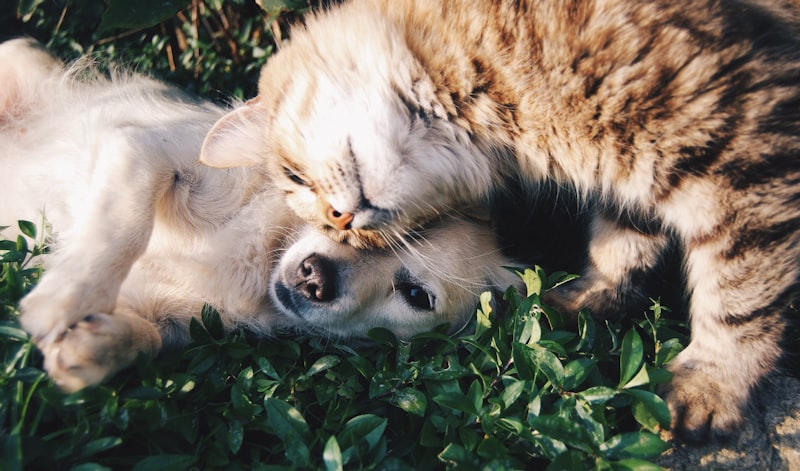So, what’s the deal? Symptoms can vary widely, but keep an eye out for excessive itching, paw licking, and even rashes. Some pups may develop watery eyes or experience digestive issues like vomiting or diarrhea. It’s like trying to solve a puzzle where each piece gives a clue to uncovering the allergens lurking in your home or yard.
Now, let’s talk treatments! One popular approach is to visit the vet, who can help identify the specific allergy, whether it’s pollen, dust mites, or even certain foods. Hypoallergenic diets might work wonders in these cases. Think of it like finding just the right shoe that fits your pooch—once you’ve got it, they’ll feel so much better!
In some cases, vets might recommend antihistamines or corticosteroids to ease those pesky symptoms. It’s like giving your doggie a little bit of a spa day, helping them relax and scratch less. For those allergens that can’t be avoided—like pollen during spring—regular baths can help wash away irritants and keep your pup feeling fresh.
And, of course, environmental controls play a significant role. Regular cleaning can minimize dust and allergens in your home, creating a cozy haven for your pup. Imagine turning their living space into a safe fortress, free from allergy triggers! So, if you suspect your dog might be suffering, don’t wait too long. A happier, itch-free pup is just a vet visit away!
Is Your Dog Sneezing? Unmasking the Hidden Symptoms of Canine Allergies
Just as we humans might react to pollen or pet dander, dogs can have their own allergic reactions that make them feel miserable. When your pup starts sneezing, you should consider the whole picture. Is there itching involved? Scratching? Red or watery eyes? These could be red flags waving for allergies. It’s like putting together pieces of a puzzle; each symptom reveals more about your pup’s health.
Think about the environment, too. Have you recently changed your cleaning products, or maybe brought in new houseplants? Sometimes, those seemingly innocent changes can trigger a sneeze-fest or lead to other symptoms like excessive paw licking or tummy troubles.
And let’s not forget about food allergies! Yep, some dogs can be sensitive to ingredients in their chow. It’s a bit like when you bite into a pizza and realize the cheese doesn’t agree with you—it’s not fun. If your dog’s sneezing is accompanied by digestive discomfort or skin issues, it might be time to reevaluate their diet.
So, the next time that adorable nose lets out a sneeze, pay attention! Observing those little signs can help you unmask the hidden symptoms of canine allergies and ensure your buddy stays happy and healthy. After all, a happy dog is a sneezing-free dog!
Understanding Dog Allergies: Causes, Symptoms, and How to Find Relief
Now, you might wonder how to spot these allergies in your pooch. Symptoms can vary, but they often include relentless itching, red or inflamed skin, and even gastrointestinal issues. Have you ever noticed your dog rubbing their face against the carpet or devouring their paws? That’s a clear sign that something’s off. Think of it as their way of saying, “Help me! Something’s bothering me!”
So, what can you do to help your furry buddy find some relief? Start with a visit to the vet; they’re like a wizard with a magic wand for health issues. They might recommend allergy testing or suggest an elimination diet to pinpoint food intolerances. It’s kind of like going on a treasure hunt—searching for clues to uncover what’s causing the distress.
In the meantime, consider adding some soothing baths into your routine. A gentle oatmeal shampoo can work wonders, calming irritated skin and washing away allergens. Keeping your home clean by vacuuming frequently and using air purifiers could also help in reducing those irritants floating around. Just like how we feel better when our space is tidy, your dog will appreciate a comfy, allergy-free environment too!
Barking Up the Wrong Tree: Common Misconceptions About Dog Allergies Debunked
First off, did you know that allergies aren’t just about sneezing and itchy skin? It’s easy to assume that these symptoms mean your dog is allergic to something in their food. However, environmental allergens like pollen, dust mites, and mold often play a significant role. Imagine a dog battling with seasonal allergies just like we do—sneezing and itching might be more about the outdoors than dinner!
Another myth is that food allergies are extremely rare in dogs. While it’s true that they make up a smaller percentage of allergies, they’re not unicorns! Dogs can develop allergies to common ingredients like beef, chicken, or even dairy. So the next time you wonder if switching to a “grain-free” diet will solve everything, consider a thorough investigation instead.
Now, here’s a real kicker: many believe that hypoallergenic dog breeds are immune to allergies. Spoiler alert: they’re not! While certain breeds might shed less fur and dander, that doesn’t mean they’re completely free from allergenic reactions. Every dog can have an individual response. It’s like thinking a cat can’t make you sneeze just because it’s a different animal; those pesky allergens still exist.
So, instead of jumping to conclusions based on these myths, it’s essential to approach the issue with an open mind. Your dog deserves the right diagnosis and care, just like we do!
From Itchy Skin to Runny Noses: Recognizing Allergy Symptoms in Dogs
First off, let’s talk about itchy skin. If your pup is constantly scratching, biting, or licking certain areas, you should pay close attention. Itchy skin can be a sign of various allergens, ranging from pollen to food ingredients. It’s almost like your dog is saying, “Hey, something doesn’t feel right here!” Imagine that feeling when you have a persistent itch; they can feel just as frustrated.
Then there are those sneezes that can rival any human’s. A runny nose could mean environmental allergies, much like how we might react to dust or smoke. If your dog’s nose has turned into a leaky faucet, it’s worth exploring. And let’s not forget the watery eyes—if your dog looks like they just watched a sad movie, it might be allergies at play.
But what about gastrointestinal symptoms? Yep, dogs can experience tummy troubles too! If your furry friend is having bouts of diarrhea or vomiting after eating, it could signal a food allergy. Think of it this way: just like some people can’t handle gluten or peanuts, your dog might struggle with similar irritants.
Being able to spot these signs is like having a doggy radar at your fingertips. Once you know your pup is feeling off, you can consult your vet for the best course of action. After all, your dog relies on you to keep them happy and healthy!
Taming Tails: Effective Treatments for Your Allergic Pooch Revealed
First off, let’s talk about the basics. You know your pooch better than anyone. Have you noticed specific triggers, like certain foods or pollen? Keeping a diary can help you spot patterns and identify what’s causing the chaos. Once you figure that out, you can tailor solutions that work specifically for your dog. It’s a bit like being a dog detective—sniffing out the problem!
When it comes to treatments, there’s a smorgasbord of options available. Dietary adjustments can have a huge impact. Think about trying a hypoallergenic dog food. Just like how we choose gluten-free or dairy-free options, your pup might benefit from a meal makeover that leans away from common allergens, such as beef or chicken.
For those pesky environmental allergies, consider getting a high-quality air purifier and bathing your dog regularly to wash away all those irritating allergens stuck in their fur. It’s like giving them a refreshing spa day—it’s good for them and can clear the air!
Allergies Aren’t Just for Humans: A Deep Dive into Canine Allergies and Management
First off, let’s chat about the common culprits. Just like humans, dogs can react to various allergens like pollen, dust mites, molds, and even certain foods. Imagine a dog rolling around in freshly mowed grass, only to end up scratching like there’s no tomorrow—that’s a classic case of pollen allergies. And food allergies? It’s like that friend who can’t enjoy a pizza night just because of one pesky topping.
So how do you know if your pooch is allergic? Watch for signs like excessive scratching, licking, or those adorable little red spots on their skin. Sometimes, it’s as subtle as a sniffle or as blatant as a bellyache. And let’s be real—nobody wants to see their fur baby distressed.

Now, managing these allergies is crucial. A vet can help you pinpoint the triggers—it’s all about the detective work! Some options include changing their diet, utilizing antihistamines, or even going for immunotherapy in serious cases. It’s like being a custom chef for a sensitive palate, ensuring your dog lives life without those pesky allergic reactions lurking in every bowl of kibble.
And remember, regular grooming isn’t just for aesthetics; it’s also a great way to keep those allergens at bay. Think of it as their spa day, minus the cucumber slices on their eyes. So stay vigilant, keep your dog comfortable, and don’t let allergies steal their joy!
Keep the Fur Flying: Top 5 Home Remedies for Treating Dog Allergies
First up, consider adding omega-3 fatty acids to your dog’s diet. Think of it as a soothing balm for their skin from the inside out. You can find these beneficial fats in fish oil or flaxseeds. Just a sprinkle can help reduce inflammation and itchiness, making your dog feel like they’re walking on clouds rather than scratching their woes away.
Next, have you heard of apple cider vinegar? This kitchen staple isn’t just for dressing salads; it’s a powerful ally against dog allergies. Mixing equal parts of water and apple cider vinegar in a spray bottle and applying it to your dog’s skin can help restore its natural pH balance. It’s like giving them a refreshing mist on a hot day!

And don’t forget about oatmeal baths. Picture your pup soaking in a warm tub, feeling like royalty! Oatmeal is a natural moisturizer that calms irritation. Just grind some oats into a fine powder and add it to their bath. In no time, they’ll be back to chasing their tail, free from irritation.
You might also consider honey, yes, that sweet stuff! Local honey can help build your dog’s immunity to environmental allergens. A spoonful a day might have them buzzing with joy, as it works wonders for their respiratory health.
Lastly, essential oils like lavender can be heavenly. A few drops in a diffuser can provide a calming atmosphere, reducing allergies and stress for both you and your furry friend. It’s like a spa day at home!
With these remedies, you can tackle dog allergies without breaking the bank. Happy tail wagging!





